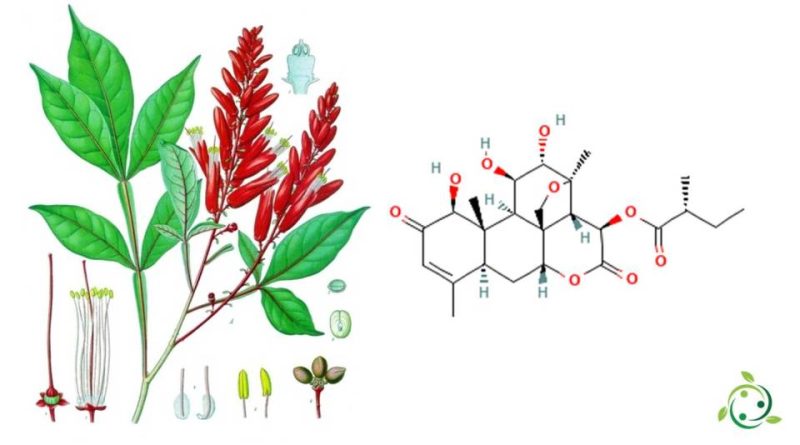Simalikalactone D
Simalikalactone D
Simalikalactone D, whose term in the official IUPAC nomenclature is: [(1R, 2S, 3R, 6R, 8S, 12S, 13S, 14R, 15R, 16S, 17R) -12,15,16-trihydroxy-9,13, 17-trimethyl-4,11-dioxo-5,18-dioxapentacyclo [12.5.0.01,6.02,17.08,13] nonadec-9-en-3-yl] (2R) -2-methylbutanoate, is a quassinoid isolated from some plants such as: Quassia amara and Quassia africana and other species.
Simalikalactone D has a brute or molecular formula: C25H34O9.
Chemically it is a quassinoid, an organic heteropentacyclic compound, a delta-lactone, a cyclic ether, an enone, a secondary alcohol, a triol and a secondary alpha-hydroxyketone.
This substance has been shown to exhibit antimalarial, cytotoxic and antiviral activities. It plays a role as a metabolite, antineoplastic agent, antiviral and antimalarial agent.
Simalikalactone D is one of the molecules responsible for the antiplasmodic activity of an aqueous preparation based on fresh young leaves of Quassia amara.
Quassia amara is a widely used species as a tonic and is said to be an effective antimalarial throughout the northern part of the Amazon basin.
Merit studies have been carried out and are being carried out to understand their activity and mechanisms of action and the synergy with other active ingredients.
Warning: The information shown is not medical advice and may not be accurate. The contents are for illustrative purposes only and do not replace medical advice.

